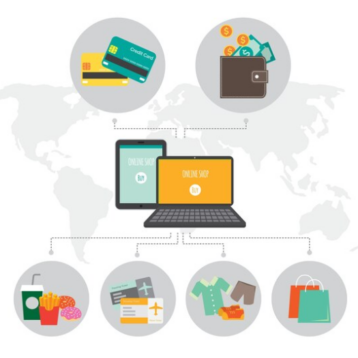
In today’s era, businesses are increasingly relying on workflows to streamline operations. Electronic documents have replaced paper-based ones with tools like Adobe Acrobat and online platforms enabling signatures. This article explores how signing PDFs impacts business processes, focusing on convenience, security, and productivity improvements.
1. Simplifying Workflows with Digital Signatures
Digital signatures are transforming how businesses manage paperwork by eliminating the need for printing and mailing documents. Learning how to sign a PDF document is now easier than ever. Uploading a PDF to a signing platform allows stakeholders to sign documents remotely, saving time and reducing ink usage.
2. Improving Team Efficiency
Paperwork often requires revisions and coordination among parties. Digital signatures facilitate real-time collaboration on files, enabling reviews and approvals without lengthy exchanges.
3. Enhancing Document Security
Maintaining document integrity is crucial for signed contracts or sensitive agreements.
Digital signatures offer organizations security measures to protect information in transit and storage. Encryption technology, an authentication method, ensures data integrity and confidentiality throughout the signing process and beyond. Additionally, audit trails keep records of all document interactions by parties involved, promoting transparency and accountability.
4. Compliance Made Easy
In regulated industries, businesses must comply with guidelines for document handling and retention. Digital signature platforms address these requirements by incorporating features such as factor authentication and automatically generated timestamps that align with industry standards. These measures not only enhance compliance but also streamline record-keeping processes and mitigate the risk of noncompliance.
5. Efficient Document Tracking and Management
Efficient tracking and management of documents pose challenges in paper-based systems due to issues like misplacements or delays. In contrast, electronic signatures offer robust organizational features that simplify document tracking and management tasks. With built-in search capabilities, businesses can swiftly locate signed files from the past or present. Filters enable sorting based on date, name, or other relevant criteria, enhancing accuracy in information retrieval and contributing to increased productivity overall.
6. Integration with Current Systems
One benefit of using signature solutions is how smoothly they can be incorporated into the company’s existing software and systems. This seamless integration allows for a shift from outdated processes to a more efficient paperless workflow without causing any disruptions to daily operations. Whether it involves document management platforms, customer relationship management (CRM) systems, or cloud storage solutions, digital signatures can work in harmony with these tools to establish a productive environment.
7. Cost and Environmental Impact
In addition to the convenience and productivity improvements, the adoption of signatures leads to cost savings for businesses. By investing in electronic signature software, companies eliminate the need to print materials such as paper, ink, envelopes, and postage. Furthermore, by reducing reliance on physical documents, organizations contribute towards practices by reducing their carbon footprint. The cost-saving benefits of signatures are twofold – not only do businesses save money on supplies and shipping costs associated with traditional paperwork, but they also decrease administrative overheads through faster document processing times.
8. Utilizing Mobile Technology for Convenient Signatures
In today’s moving business world, professionals often find themselves on the go, attending conferences, or meeting clients away from the office setting. In today’s age, the use of signatures goes beyond computers and laptops. Mobile devices now allow people to sign documents while on the move. The availability of apps designed for signatures provides more flexibility and accessibility. By tapping on their smartphones or tablets, individuals can authenticate binding signatures in seconds from anywhere in the world as long as there is an internet connection.
To Sum Up
incorporating signing for PDF documents has become an aspect of modern business processes. The advantages are improved operations efficiency among teams, better security measures, simplified compliance management, and effective document tracking and organization systems. By embracing signatures, companies support eco practices by reducing paper usage and saving time and resources. Embracing signatures offers a range of benefits not only for businesses but also fosters collaboration among stakeholders in different locations.










